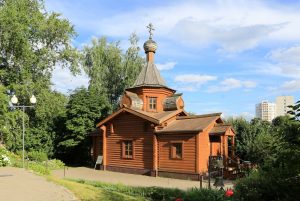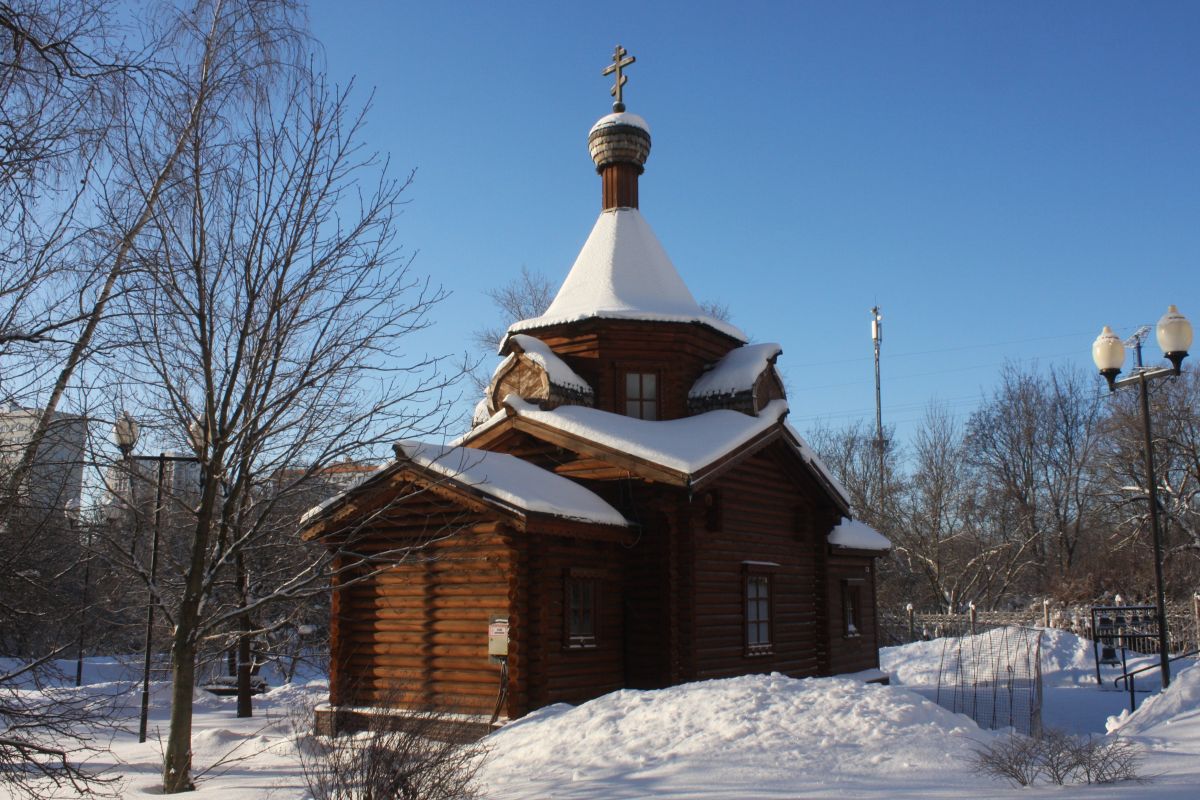Church-Сhapel of the Saints of Moscow

The Moscow Saints are the spiritual pillars of the Russian Church, who have made a huge contribution to its strengthening. They fought for the faith, defended the people, built churches, and opposed injustice. Their memory is still alive today, inspiring believers to persevere in faith and serve God. On October 18, the Church honours the Saints of Moscow – Peter, Alexy, Jonah, Philip, Hermogenes and Tikhon. This holiday is established in honour of outstanding Russian metropolitans and patriarchs who played an important role in the history of the Church and the state. The celebration dates back to 1596, when Peter, Alexy and Jonah began to be honoured. Later, in 1875, Philip joined them, in 1913 – Hermogenes, and in 2005 – Tikhon.
Saint Peter (1260-1326) was born in Volhynia. From his youth he devoted himself to spiritual life, studied the Holy Scriptures, and painted icons. In 1305, he became Metropolitan of Kiev and All Russia, but due to threats from the Tatars, he moved the see to Moscow (1325). This contributed to the rise of the city as a spiritual centre. Saint Peter tried to reconcile the princes, strengthened the church structure, and obtained privileges for the clergy from the Khan of the Horde. He laid the foundation stone of Moscow first stone church, the Assumption Cathedral in the Kremlin. He was glorified as a saint shortly after his death (1327). Metropolitans and patriarchs received the pontifical staff at his relics.
Saint Alexy (1290s-1378) was a native of Moscow, and from his youth he chose the path of monasticism. In 1354 he became Metropolitan of Moscow. He succeeded in strengthening the position of the Russian Church and achieving its independence from Constantinople. Saint Alexy actively restored monasteries and temples destroyed by the Tatars, and contributed to the rise of the Moscow Principality. In the Horde, he healed the khan’s wife, for which he achieved new privileges for the Russian Church. Metropolitan Alexy was the spiritual mentor of Prince Dmitry Donskoy, which helped prepare the country for liberation from the Mongol yoke. His relics were found incorruptible (1431), which became evidence of his holiness.
Saint Jonah (1390s-1461) was born in Galicia, and became a monk at the age of 12. He served at the Ryazan department, and in 1448 became the first metropolitan elected in Moscow without the consent of Constantinople, which marked the independence of the Russian Church. Saint Jonah strengthened the Orthodox faith, built churches, and became famous for his gift of miracles and perspicacity. After his death, numerous healings were performed at the tomb. In 1472, his relics were transferred to the Assumption Cathedral of the Kremlin.
St. Philip (1507-1569) came from a noble family, from his youth he was preparing for public service, but at the age of 30 he left secular life and went to the Solovetsky Monastery. Here he became the abbot and actively developed the monastery. In 1566, he was elected Metropolitan of Moscow. He courageously denounced the oprichnina of Ivan the Terrible, and spoke out against the brutality of the authorities. For this, he was defrocked, imprisoned and killed by order of the tsar (1569). Initially, his relics rested on Solovki, but in 1652 they were moved to Moscow. St. Philip became a symbol of the church commitment to truth.
Patriarch Hermogenes (1530-1612) was born in Kazan, where he became a priest, then a bishop. In 1606, he was elevated to the rank of patriarch. His ministry came at a time of Troubles. Saint Hermogenes called on the people to fight against the Polish invaders and impostors. For this, he was deposed and imprisoned in a monastery, where he died a martyr’s death from starvation. After the liberation of Moscow, his relics were transferred to the Assumption Cathedral. Patriarch Hermogenes became a symbol of loyalty to the Fatherland and the Church.
Patriarch Tikhon (1865-1925) was born in Pskov governorate, and devoted himself to spiritual service from his youth. He was a bishop in North America, and actively promoted Orthodoxy among emigrants.
In 1917, after a 200-year hiatus, he became the Patriarch of Moscow. During the years of persecution of the Church, he remained faithful to the faith, despite persecution by the Soviet government. Tikhon openly opposed the opening of relics and the seizure of church valuables and was arrested. He died in 1925.
Address: Moscow, Mozhaiskoe sh., 56A

